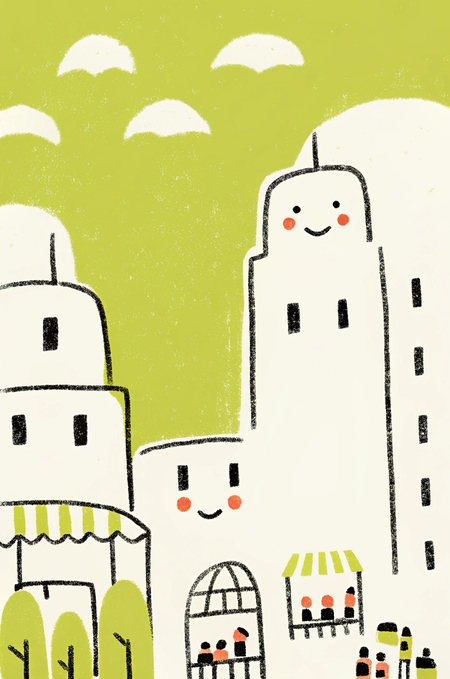
Analysis of the urban happiness index
Project description
For analysis, I chose the curious dataset «The City’s Happiness Index 2024», which was taken from the Kaggle platform. This dataset is interesting in that it allows to explore the relationship between different urban factors and the level of happiness of people around the world. Happiness is a complex and multifaceted indicator that depends on many factors, and the analysis of these data can help to understand which aspects of urban life are most important. This is an up-to-date topic, as urbanization and quality of life in cities are becoming increasingly important issues for each of us. The data include a variety of metrics, such as noise levels, traffic density, green area, air quality, cost of living, quality of health care, and a common score of happiness, which allows us to explore complex relationships.

To visualize the data, I have selected the following types of graphs: — Linear Graphics: Allows you to demonstrate the impact of the area of the green areas on the level of happiness. The line schedule is well suited for the presentation of trends, relationships and analysis of changes in indicators over time. — The exact graph and the point graph with the trend line make it possible to show the relationship between the level of happiness and the quality of the air. The exact graph helps to detect the correlation between the two variables. — A circular diagram allows for the visualization of proportions, such as the distribution of cities by traffic density. This makes it possible to estimate quickly the percentage of cities with low, medium, high or very high levels of traffic. I chose these kinds of graphs to make the most of the visualization of the difference between the data, and it was clear at first sight.
Phases
First step, I downloaded data from the CSV file using the pandas library. After the download, I did a preliminary analysis of the data to understand their structure and the missing values. This phase allowed me to make sure that the data was correctly downloaded and did not contain clear errors.
Since the dataset included data in English, for ease of reference, I partially processed the categorical data by translating them into Russian using a dictionary. Application can be seen further in specific schedules.
I used data sorting to create graphics. Use can be seen in graph codes below. For example, I sorted the data from the Happy_Score column for the top 10 cities.
In stylizing graphics, I was inspired by the image I generated at ReCraft. It depicts elements of the urban environment, such as green areas, modern buildings, and clean air, which symbolizes the key factors that influence the level of happiness in the city. The image was stylized using pasting tones and minimalist design to highlight the importance of ecology and quality of life in the urban environment, the colors were given by me. The project cover is also generated by ReCraft.
Review image
In the graph, I used the DejaVu Sans font for all text elements in the graphs to ensure consistency and readability. I also added headlines, axis signatures and graphic values to make them more informative. To create a harmonious style, I used a light background (#FAF8EC) for all graphics. This helps to isolate the data and makes the graphs less overloaded. Data processing and graphic stylization were carried out with a focus on clarity and clarity.
Final schedules
Figure 1: Top 10 cities by level of happiness
A table diagram visualizing the impact of green areas on happiness
The graph shows the 10 cities with the highest level of happiness. Oslo is the leader of the rating, followed by Vienna and Helsinki. Other cities, such as Wellington, Oakland, and Sydney, have similar meanings. The leading cities come mainly from Europe and Oceania, which can be linked to improved infrastructure, social support and favourable living conditions.
Figure 2: The impact of green areas on happiness
Linear graph and its code on the impact of green areas on happiness
The graph shows a positive correlation between the percentage of green areas in the city and the level of happiness. It’s becoming clear that the more green plants there are, the higher the population’s level of happiness.
Graph 3: Traffic density distribution of cities
Round diagram showing the distribution of cities by traffic density
The graph shows that most cities have average traffic density (35.3%). The traffic density is very high in 17.6 per cent of cities, which can have a negative impact on happiness due to increased stress and reduced mobility.
Graph 4: Reliance on air quality and traffic
A precise timetable illustrating the dependence of happiness on air quality and traffic
The exact graph shows the relationship between the level of happiness and the quality of the air, taking into account the density of traffic. Negative correlation is visible: the better air quality, the higher the level of happiness. Cities with low traffic density are more likely to have higher levels of happiness, even with average air quality, indicating the importance of mobility and stress reduction. Cities with very high traffic density, even with good air quality, have lower levels of happiness, highlighting the negative effects of traffic. It is becoming clear that improved air quality and reduced traffic density are needed to improve happiness, given the complex interaction of these factors.
Figure 5: Dependence on cost-of-living happiness
A precise graph with a trend line and its code on the cost-of-living dependency of happiness
The chart shows the relationship between the level of happiness and the cost-of-living index. The trend line shows a positive correlation: happiness tends to increase with the rising cost of living. However, the spread of data around the trend line indicates that the link between these variables is not strict. This indicates that a high cost of living can contribute to a higher level of happiness, but is not the only determining factor.
Conclusions
Graphic analysis shows that urban happiness depends on many factors, including the environment, infrastructure and quality of life. The improvement of these aspects can contribute to the improvement of the population ' s happiness. An integrated approach helps to build a happier society.
Description of the application of the generic model



